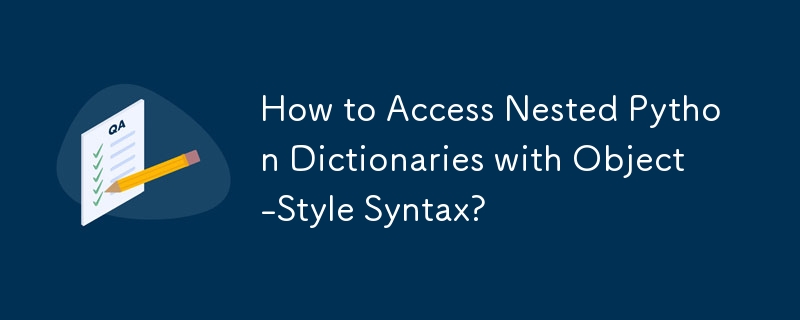Home >Backend Development >Python Tutorial >How to Access Nested Python Dictionaries with Object-Style Syntax?
How to Access Nested Python Dictionaries with Object-Style Syntax?
- Linda HamiltonOriginal
- 2024-11-12 05:49:021119browse

How to Access Nested Python Dictionaries with Object-Style Syntax
When working with nested dictionaries in Python, it can be cumbersome to access data using keys. This is where the need for object-style syntax arises.
In Python 2.6 onwards, the namedtuple data structure offers a solution. Namedtuples allow creating tuples with named attributes, making it easy to access data using attribute syntax. For example:
from collections import namedtuple
MyStruct = namedtuple('MyStruct', 'a b d')
s = MyStruct(a=1, b={'c': 2}, d=['hi'])
print(s.a) # Output: 1
print(s.b) # Output: {'c': 2}
print(s.c) # Error: AttributeError: 'MyStruct' has no attribute 'c' since it's not defined in the tuple
print(s.d) # Output: ['hi']
An alternative approach can be implemented using a custom class:
class Struct:
def __init__(self, **entries):
self.__dict__.update(entries)
args = {'a': 1, 'b': 2}
s = Struct(**args)
print(s.a) # Output: 1
print(s.b) # Output: 2
Both namedtuples and custom classes provide an elegant solution to access nested dictionaries in Python using object-style syntax. Consider the appropriate data structure for your specific use case.
The above is the detailed content of How to Access Nested Python Dictionaries with Object-Style Syntax?. For more information, please follow other related articles on the PHP Chinese website!

